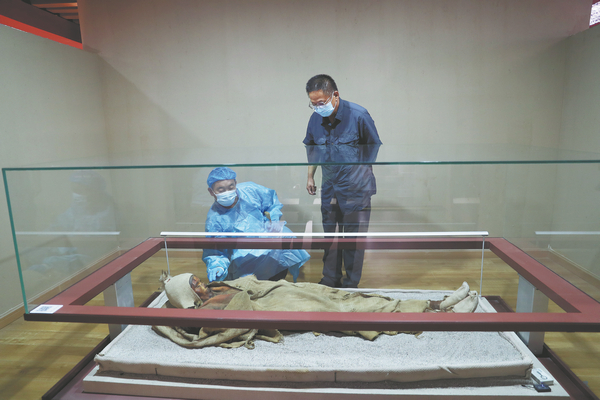

Editor's note: The 20th National Congress of the Communist Party of China laid out a blueprint for the nation's path to modernization, with the aim of guiding the development of all people in the new era and contributing positively to global progress. Throughout the year, China Daily will run a series of picture stories that highlight important waypoints on this journey. In this sixth installment, we focus on Loulan, an ancient kingdom on the Silk Road and people who work in the stations safeguarding the historical heritage.
Loulan, an ancient city on the Silk Road, conjures up images of mystery and romanticism even as it disappears into the mists of history.
Shiji, or Records of the Grand Historian, the foundational text of Chinese history dating back to the first century BC, records that before the 2nd century BC, Loulan was already famous in Xiyu (the western regions, a term to describe today's Xinjiang Uygur autonomous region and Central Asia in ancient times). However, it collapsed in about the 5th century. In 1900, Swedish explorer Sven Hedin discovered the site of ancient Loulan.

Located in Lop Nur, a former salt lake which has largely dried up, in Ruoqiang county, Bayingolin Mongol autonomous prefecture, Xinjiang, the Loulan site covers an area of about 120,000 square meters.
Its extremely harsh environment ensured that few people set foot on this area.
In the 1990s, when mummies were discovered in this area, grave robbers noticed the wealth of cultural relics.
To tackle the situation, a Loulan cultural relics protection station was built in 1998. At first it was seasonal, and later became permanent in 2003.
Jiao Yingxin, former director of Ruoqiang Cultural Heritage Administration, was devoted to the protection of the Loulan site for about three decades until retirement. He is also the one who found "Loulan Beauty", a well-preserved female mummy with clearly visible hair and eyelashes, in 2004.